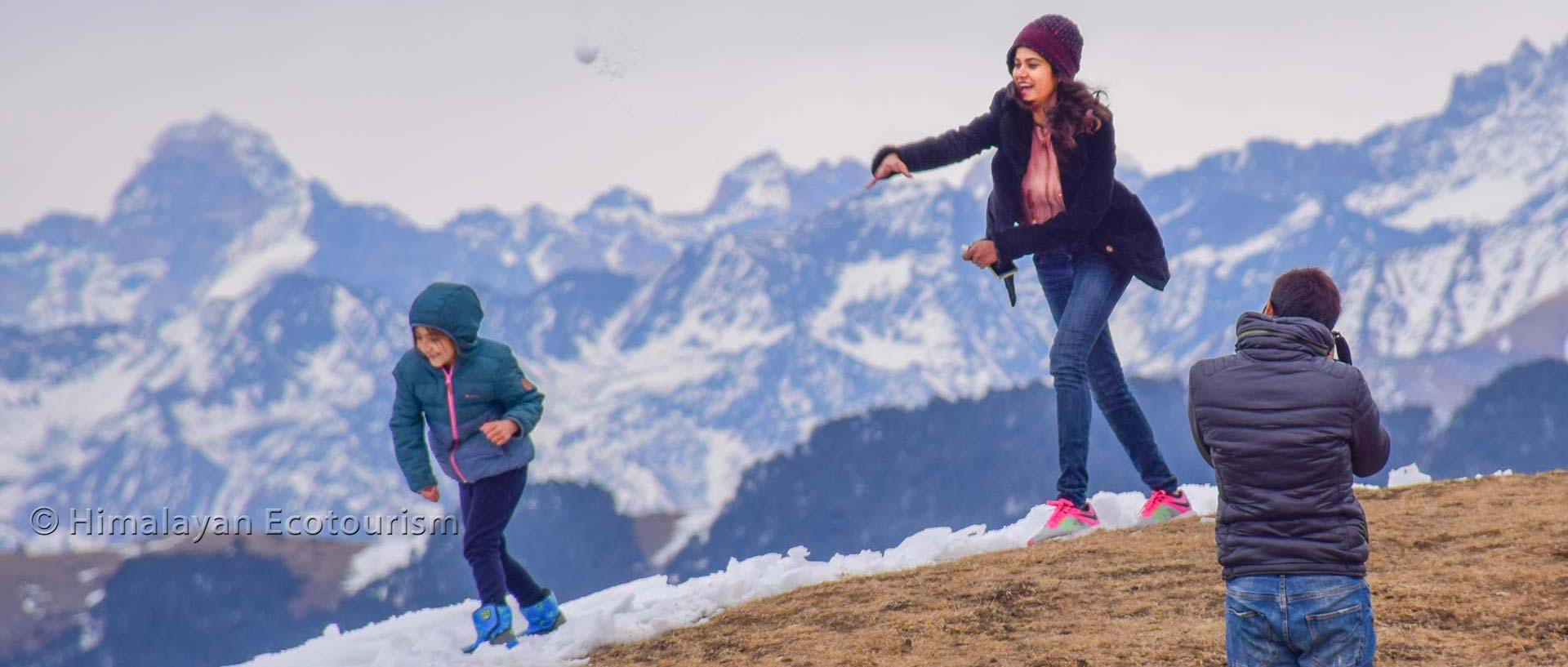How winning the Responsible Tourism Award 2019 has helped our initiative
By Stephan Marchal, Co-founder – Himalayan Ecotourism
My life as an active conservationist started in India, in the state of Jharkhand, in the forests inhabited by the Munda tribe. I found evidence in the lifestyle of these local forest-dwellers that humankind could live in harmony with nature to a great extent. And so, this tribal area, infamous for its Maoist presence and unparalleled economic disparities, and steeped in tensions between inter-religious groups became my foray into social activism with rural communities in India.
Years later, when I moved to the Himalayas, I found that I still had the motivation to work for conservation with the local community, but I decided to drop the non-profit methodology and instead opt for a social enterprise model of working.
Tourism appeared to be the most natural and obvious entry point to this path. And after anchoring myself on the periphery of the Great Himalayan National Park (GHNP), outdoor and adventure activities have become my focus. Our initial idea was quite simple: get tourism activities to generate income which would enable the local people with whom we were collaborating to grow economically. This would also enable us to undertake conservation projects independently of any grants or donations from outside bodies.
The local people who were already working in the field of trekking in the national park quickly took to the idea very naturally. After a couple of weeks of meetings and discussions, we decided to establish a cooperative society with a maximum of members so that they could become socially strong enough to work towards and defend a sustainable model of tourism.
That’s how I began working for conservation through tourism. We called ourselves Himalayan Ecotourism. But implementing what looked like an excellent idea was really not that easy. Trying to mobilize the locals became a disturbing thought to those in the local system who dominated the tourism business in Tirthan valley.
There is an intriguing fact about the GHNP and the community around. The villagers living close to the park are still natural resources-dependent for their livelihood. While the creation of the National Park took away their rights over these resources, it created a conflict between the community and the park administration and sense of distrust.
A few committed members of the GHNP administration tried to address this issue by creating the possibility of an alternate source of income for the villagers – through ecotourism. An “NGO” was established to see this through. Some people with the best possible profile for the job were identified (if not appointed) and encouraged to collaborate with the NGO. Unfortunately, very few of them were genuinely invested in the long term well-being of the Park or of the local community, but this aspect played out much later. For now, things looked to fall in place with the Park administration, with its members satisfied that the local community and the Park would coexist peacefully.
Unfortunately, things began to change when the original thinkers within the GHNP administration left the park. It was they who had found it necessary and essential that there should be a buy-in from the local community who should feel invested in the National Park. But when they (GHNP Government officials) were transferred as is usually the norm, the very people who were entrusted to be the mediating body between the local community and the Park began to now focus on their own interests.
Things were back to square one after the setting of the Park. The local community found no interest in the existence of the National Park since there was no economic benefit for them, and the access that they used to have to the protected area was no longer available.
The villagers continued to sneak inside the park to exploit its natural resources, except that it was now illegal to do so. And this situation if any was bound to be disastrous for the people by being in eternal conflict with the GHNP.
This was the time when we stepped in. On July 2, 2014, with 65 members, the GHNP Community-Based Ecotourism Cooperative Society came into being. Things were not easy since the local elite (advanced folks with business interests) tried their best to ensure that the project never took off. It took us nine months of struggle to do it, but we didn’t know that our real troubles were yet to start.
The stories from the following four years are typical of a social effort happening in an area where the regulations are either inadequate or not implemented and undermined by corruption. The Tirthan Valley, a small world nestled between high mountains was far too removed from the democratic ecosystem of India, and everything that unfolded here was suited to the needs of certain local powers: and it reminded one of how banana republics of South America would have functioned.
Not the ideal environment for a grassroots movement to flourish.
And then there was another factor that compounded the existing problem. Our cooperative members have a limited understanding of world affairs, as their awareness levels were hyperlocal, similar to small island communities of the world. This also meant that they were easily discouraged by the negative response from the same elite who were once upon a time a reference point in their lives. Some of the members of the cooperative group began to see their own work as counterintuitive. And this was very discouraging.
The only positive response came from our clients–the people who were taken on treks by the cooperative members. I always made it a point to make these trekkers understand how a cooperative society is supposed to empower their trekking staff. But I was getting the feeling that the motivation and commitment required at this level were not enough for keeping the idea and group together. I could keep the cooperative going by coaching key people; offering better work conditions compared to competitors; and by gradually increasing the volume of business through marketing efforts.
This is when we got nominated for the Indian Responsible Tourism Award 2019 in the category of the Best Adventure Operator. First longlisted, and then shortlisted.
Suddenly, the cooperative members felt that there were in the spotlight for the right reasons. The recognition they were getting was from beyond their valley, and that people from beyond Himachal Pradesh were affirming their good work and calling this an excellent organization!
After we were shortlisted, we had a meeting of around 10 members. We didn’t talk much about the nomination, but during the meeting, an idea of launching a tree plantation project emerged. Of course, I immediately responded positively. And so it was the first time that Himalayan Ecotourism decided to implement a conservation project that is the initiative of cooperative members. Without a shred of doubt, I am positive that the nomination for the Responsible Tourism Award was the trigger behind this unexpected idea.
I went with two members to Delhi for the award ceremony. Keshav, the President and Sanju the Treasurer of the cooperative. Not only did we win the Best Adventure Operator medal, but we were also the Overall Winner of the 2019 award. This news spread across the Tirthan valley like a wildfire.
When we came back in the valley we could feel the immense joy that this created. I could see cooperative members congratulating each other in the streets of Gushaini. They understood it was their award! And they knew it was granted for to their efforts to work as a cooperative society, a promising model of local responsible tourism.
And at the next meeting, we had many more members than usual. The usual resistance to ideas had evaporated: we even discussed aspects of how the functioning of cooperative could be improved. In short, we agreed that, with a double award in hands, we should let the past behind and look ahead for a brighter future. Meanwhile, our local competitor who had given us a very hard time during our initial days reacted by mobilizing other locals in making a second cooperative society.
We hope our awards will increase the visibility of our model and inspire locals to replicate it in other areas where tourism is developing. But we strongly feel that it should not come at the cost of our cooperative.
One area, one cooperative… A second cooperative would defeat the very idea of a cooperative which is to bring people together. It would only bring in a destructive competition between locals, and be at cross purposes for the original idea which is to ensure better conditions for everyone.
Now looking back at the entire scenario, I strongly believe that the main reason that brought us the award is not just our cooperative model, but the fact that we are genuinely working with the community for conservation, and not merely for the sake of greenwash!








